13/06/2021 Opel’s baby SUV gets a makeover, loses its ‘X’ moniker and slots very neatly in to the compact car sector. In the flesh the Crossland is narrow, tall and small. The front wheel drive Opel stays on its existing platform yet looks new and quite dinky. The Crossland is clearly a machine designed for the urban environment. The Crossland may hit many ‘SUV styling’ markers but in truth it is one of the more disarming variants you can buy.
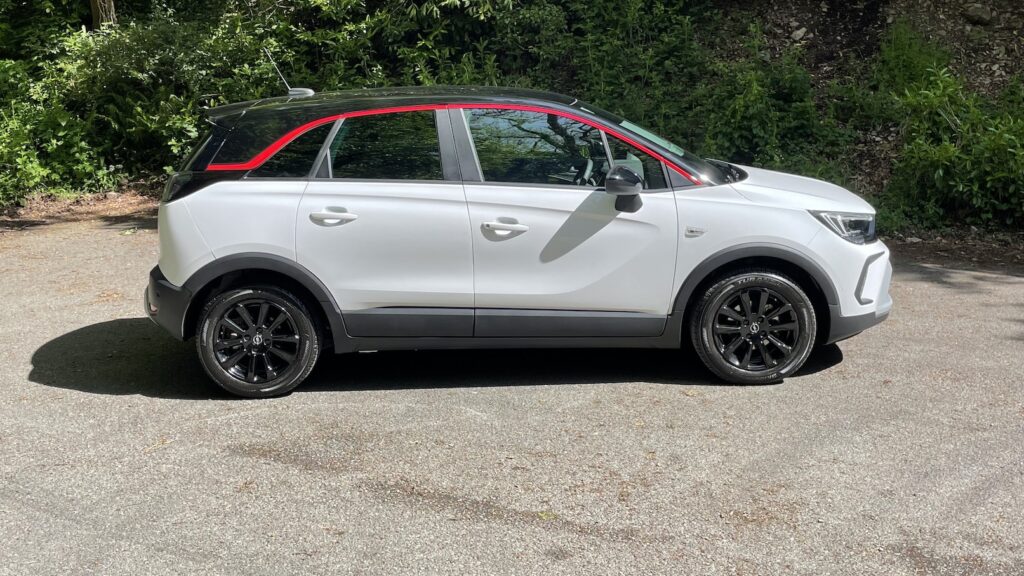
The five-door’s exterior features Opel’s new and quite handsome ‘Vizor’ grille that signifies Opel’s rejuvenation. The famous Opel blitz badge looks very smart on a solid gloss-black surface. The engine gets its cool air from lower down at number plate level and this adds to the cars contemporary appearance. The front light clusters are well designed and join up well with a sleeker bonnet. The flanks feature the latest take on Opel’s blade (swoosh) imprint. Our test car’s two tone paint featured a cheeky but nice red line that travels from the base of the A pillar to the base of the C pillar at the rear. With quite modest performance on tap its not quite a GTi’s go-faster stripe – but a bit of fun. The tailgate and rear is well though out also. The boot is very large for the class and versatile with a split level floor. Overall the exterior is class blocky SUV but in a compact and urban friendly form. The Crossland is a refreshingly narrow and compact car that drivers who have to use tight and confined urban streets will find effortless to use.
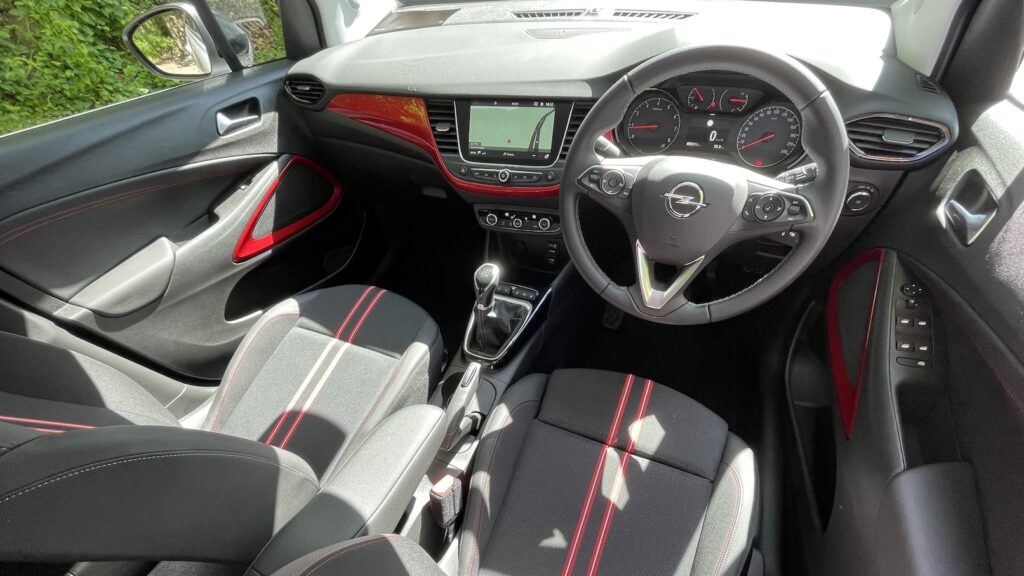
Inside the cabin of our SRi grade Crossland there is seating for up to five but four adults will fit comfortably. Our well equipped test car raised a smile on entry thanks to red gloss painted highlights on the dash and doors. The seats get a splash of colour too and this is a far cry from Opel’s of old that would tend to be relatively dull inside. To get a reasonable driving position in out five-speed manual car you are encouraged to raise the seat height and push yourself forward to make the pedals more comfortable to use. This subtle manipulation of the driver means they get a more commanding view of their surroundings and the rear seat passenger gets more legroom. I would normally sit close to the lowest setting in most cars but I raised my seat by about 5 or 6 level pulls to feel optimal. With smartphone connectivity, a touch screen and also plenty of traditional buttons and switches the Crossland was instantly easy to use and get along with.
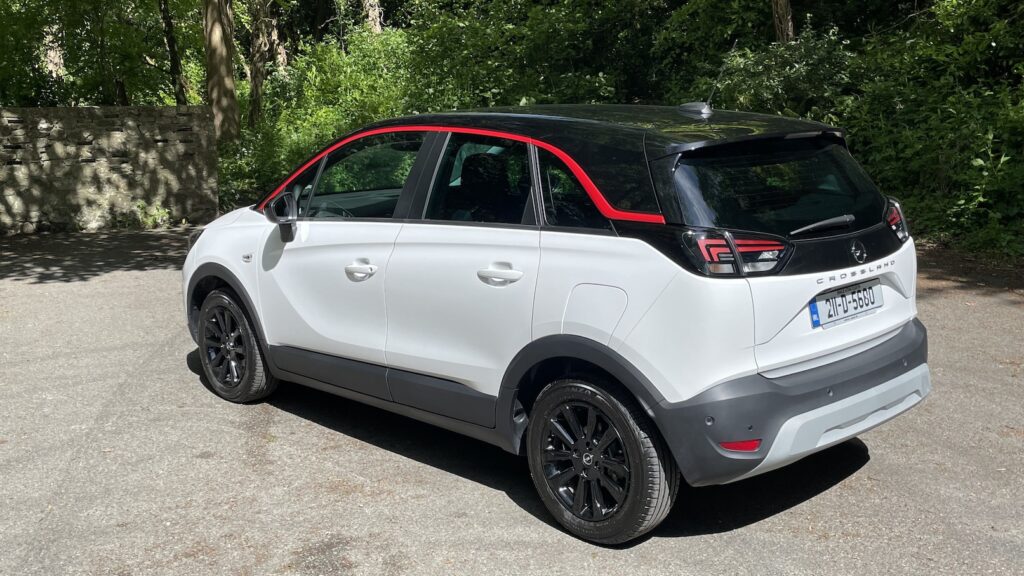
As a member of the PSA and now Stellantis automotive group the Opel Crossland benefits from access to a deep well of engineering expertise and components – ironically Opel led in the production of the original Crossland X project that also delivered the Peugeot 2008 before the German firm was officially taken over and financially rescued by the PSA group (Peugeot). Opel has continually upped its game since then and its latest crop of cars feature vastly improved styling. Opel now has two models in the compact SUV class the Crossland and Mokka. On paper this would seem silly but in the metal each has their own niche. The Mokka is built on a new platform and at 1791mm wide (v 1765mm) and 1531mm tall (v 1605mm) offers more crossover design sophistication and sits squatter on the road – plus it has a multi-fuel engine offering. While the Crossland takes a more function-first approach and this is reflected in its lower price point starting from €22,395 (ex. dealer charges).

The stop/start Euro 6d compliant petrol or diesel engine range features: a five-speed manual 1.2 petrol with 83hp/118nm and emissions of 134g CO2 (WLTP), a turbo-charged 130hp/230nm six-speed automatic 1.2 with 138g CO2 (WLTP), diesel power comes in the form of a six-speed manual 110hp/250nm 1.5 litre that produces 120g CO2 (WLTP) and a turbo-charged 1.5 litre six-speed automatic with 120hp/300nm and 131g CO2 (WLTP). Diesel power looks like a good choice for high mileage commuters or motorway users. Niggles? Our petrol car’s manual gear shift lever is not overly precise and the clutch travel is also a little high before it bites. The handbrake release button is on top of the lever, which feels is a little odd but you get used to it.
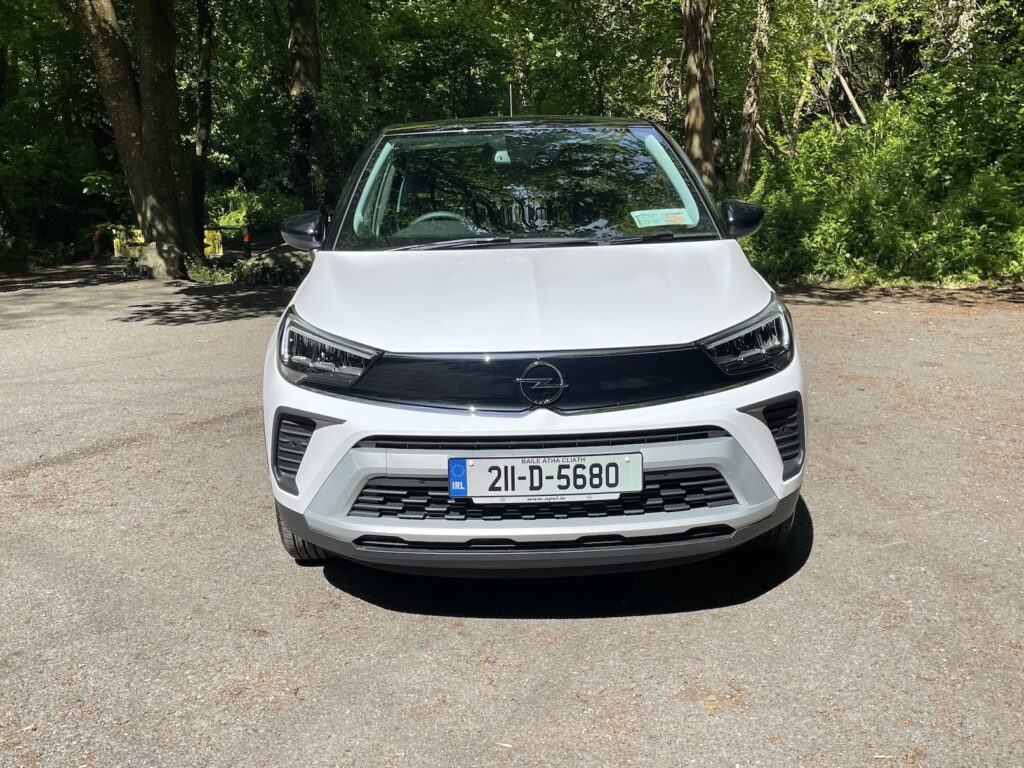
Available in seven different body colours the grade structure features ‘SC’, ‘SRI’ and the range-topping ‘Elite’ trim. SC equipment includes: hill start assist, cruise control with speed limiter, lane departure warning, enhanced traffic sign recognition, six airbags, leather steering wheel, manual air conditioning, rain sensing windscreen, automatic lights, seven-inch touchscreen with Apple Car Play and Android Auto, DAB radio, USB connectivity and 12-volt socket. SRi trim gets: park assist front and rear, rear view camera, AGR driver’s seat, eight-way driver seat adjustment with driver seat cushion extension and lumbar support, ambient white LED cabin lighting, driver’s armrest, half-leather effect upholstery trim, a painted two-tone roof, tinted rear privacy windows, silver skid plates, 16” alloy wheels and LED front fog lamps. Elite trim adds: leather upholstery, heated front seats, heated leather steering wheel, electronic dual zone climate control, an upgraded central console with lidded storage, sliding split folding rear seats with armrest, a 3.52 colour driver instrument display, a rear 12-volt socket and 16” alloy wheel upgrade.
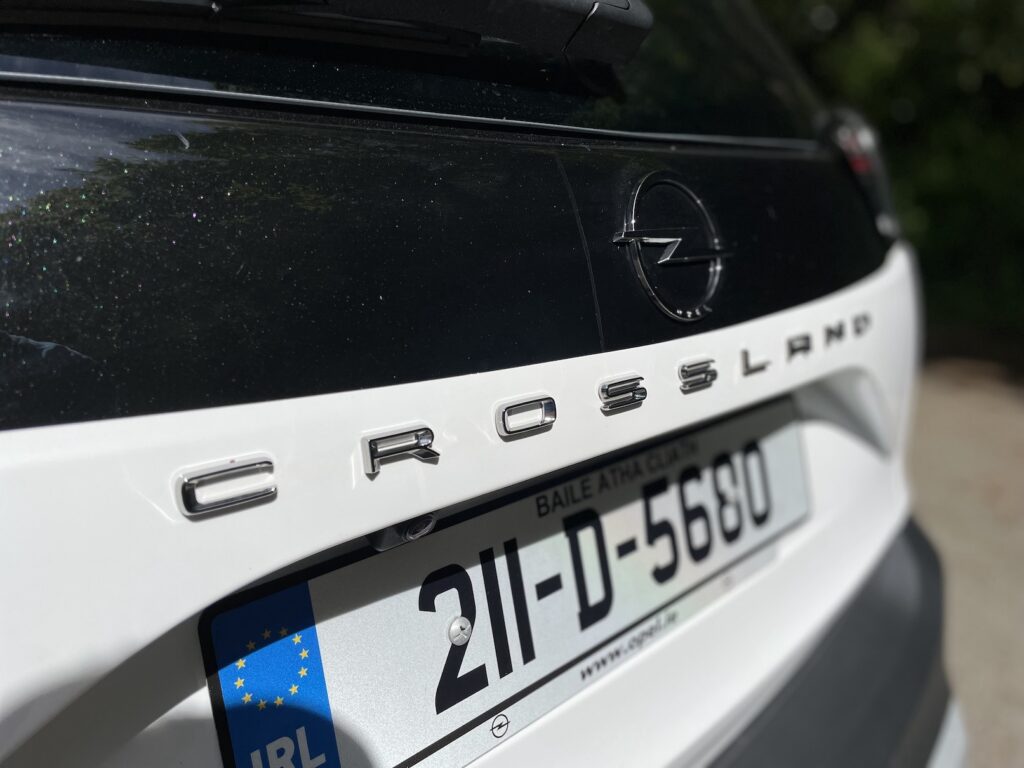
James Brooks, Managing Director at Leeson Motors, Irish Importer of Opel, said: “The arrival of the all-new Crossland heralds the start of a complete rejuvenation of the Opel model line-up in 2021.”
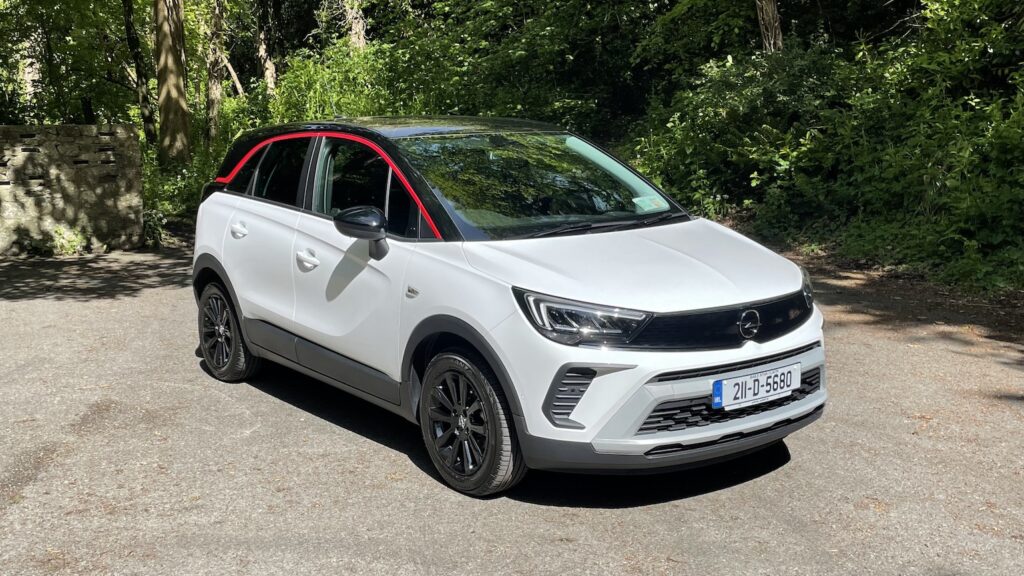
On the road our 1.2 SRi Crossland (€24,050) was an eager companion. The three-cylinder 1.2 litre is nippy about town and can also manage motorway speeds with a bit of encouragement. Petrol power never delivers outstanding fuel consumption, Crossland’s official average figure is quite good – quoted at 5.9 – 6.3 l/100km (circa 46-mpg). During testing we had to remind ourselves of the fact the car is narrower than most. The fear of meeting on coming cars on country lanes or negotiating tight urban streets and their road users holds no fear for the Opel Crossland. Its tall stance and proportions make it easy to position on the road. The only driving niggle is the driver’s pedal layout and the ‘long clutch’ we experienced with our test car. This could dictate the type of footwear you can comfortably drive with. New Crossland could have been a very average car but has turned out to be far from it. Michael Sheridan




